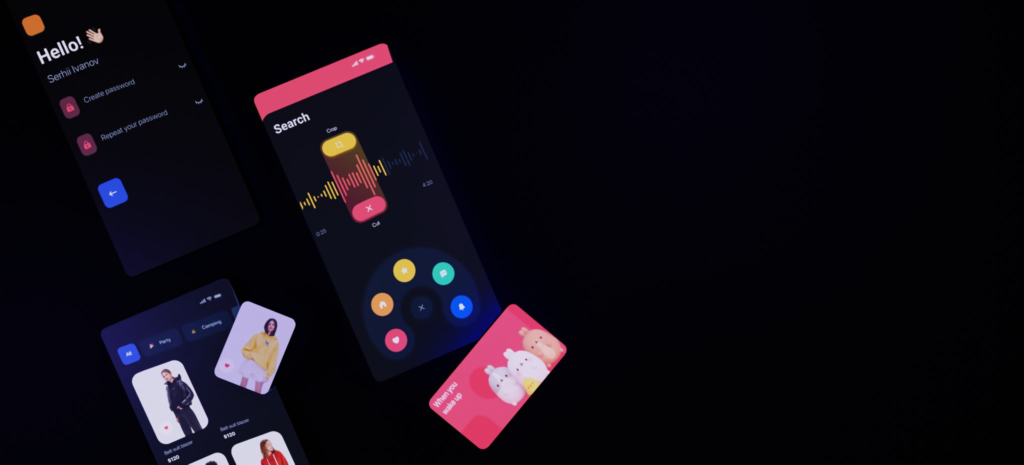Let’s start with the most obvious question – What is PropTech? The name PropTech is an amalgamation of the words “property” and “technology”, and is also commonly referred to […]
The user experience, or UI, is one of the most important aspects of any app, and it can make or break a business. While it’s not the same as the user interface (UI), the UX design directly affects the UI design, and therefore the entire look as well as the feel of the app. Just like fashion or tech toys, UX design is not immune to new trends and fads which excite users and make them want to own the app. As a software development company, we here at Redvike need to have an understanding of changing user preferences and keep up with all the latest technological developments. Based on that experience, we will present a list of UX design trends which we believe will prevail in 2022.
Let’s preface this by asserting that user testing is essential! Designers know this, and it’s vital to understand – you shouldn’t base the UX on your own preferences. Instead, read the room, so to speak. Really hear your users and deliver what they actually want and like. Their opinions won’t always come directly and clearly. That’s why it’s also important to analyze behaviour and interaction with the app.
Let’s take a look at the most popular features predicted to dominate apps in 2022!
The use of 3D elements is not unfamiliar, yet their designs have been excelling over the years and we don’t see it stopping any time soon. They can be used to create a modernistic look like with the new macOS; or to display products to give a realistic feel to them, which in turn drives increase in sales. Even when using a minimalistic approach to a website design, 3D elements can give it a proper oomph factor without being overbearing. The issue so far has been that complex 3D elements take ages to load, which is obviously a disincentive for users to stay on a site or app. Developers are already working on this problem, so we foresee drastic improvements in loading times and element quality.
Users are enchanted with animations because they tell a story, and they can show someone what to do without actually using text to do it. Interactive animations actually have usability and purpose besides being merely eye-catching and entertaining, and they will continue to be heavily used in 2022. A separate subgroup of animations that will remain a UX trend are so-called micro-interactions – smaller animated elements which engage users and add imperceptible appeal to the app or website. Some examples of micro-interactions are: animated loading or refresh pages, Facebook reactions, email swipe actions, internet speed tests, and many more.
While this is not new, dark themes are still a lacking feature in many apps. This is surprising because they are extremely popular. For one, they look very cool and unique; and they come in all sorts of darker colors, not just black. Another thing is that they are easier on the eyes, especially in low light conditions or at night. Finally, they don’t use up as much of your phone battery! Therefore, expect more and more apps to come up with dark mode versions next year.


No matter how much you “dress up” a table or a graph, it’s still going to look mundane and old-fashioned. Instead, designers will increasingly use a more visually appealing approach to presenting data. By incorporating illustrations and elements that the user can also interact with, we are able to grasp the user’s attention and get them introduced to the subject material in a shorter amount of time. Besides, it’s very original and it will leave a more lasting impression.
These past few years there have emerged quite a few very well-known voice assistants, such as Google Home and Alexa. Recognizing the ease and efficiency with which users can obtain information through voice commands, they have started using and demanding voice search and control features from their other devices. In fact, more than 70% of users now choose voice search and smartphone control. Next year we anticipate even further improvements in the functionality of this UX feature.
Using new fonts is the easiest way to give an app a fresh look. Although the eye is captivated by unique typographic designs, flamboyant fonts can also easily negatively impact a user’s experience. Furthermore, developers need to design with the application purpose in mind – for example, applications for industrial use where the user needs to focus more on the information displayed should have a more balanced, neater design. In 2022, we can expect new font designs, and move even further away from the boring old, basic ones.
Besides using our phones, we are increasingly wearing smart gadgets such as smartwatches, wireless headphones, VR headsets, etc. UX design on wearables is oftentimes lacking though, and steps are being taken to improve that. When designing an app intended for smaller devices, developers are keeping in mind seamless functionality and gesture recognition, picture and graphics quality, as well as optimizing navigation.
It will be interesting to see how UX design trends evolve next year, considering the increasing implementation of immersive experiences such as augmented and virtual reality elements. Designers need to focus on critical as well as creative thinking, and always keep the UX design relevant and valuable for the users.